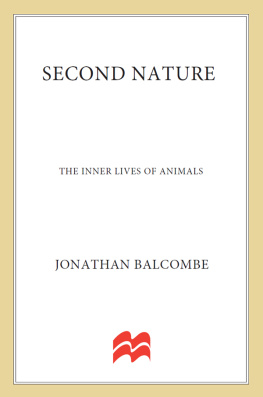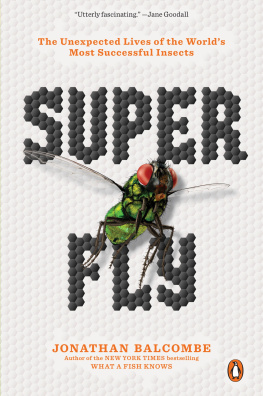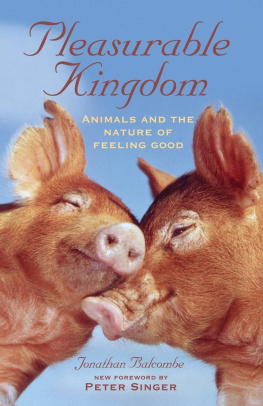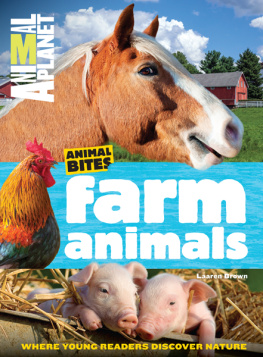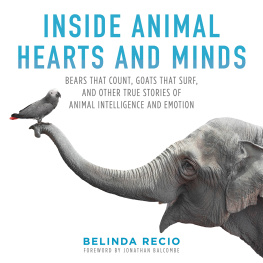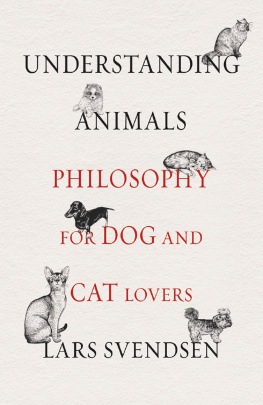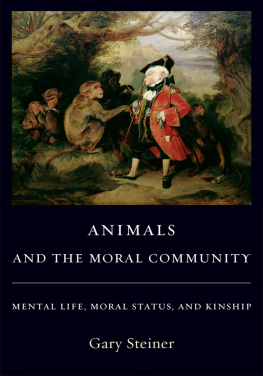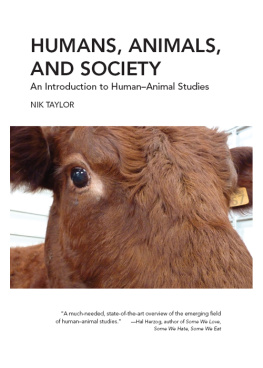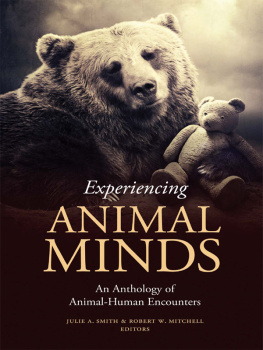second nature
Also by Jonathan Balcombe:
Pleasurable Kingdom:
Animals and the Nature of Feeling Good
second nature
the inner lives of animals
Jonathan Balcombe
Foreword by J. M. Coetzee

The author and publisher have provided this e-book to you for your personal use only. You may not make this e-book publicly available in any way. Copyright infringement is against the law. If you believe the copy of this e-book you are reading infringes on the authors copyright, please notify the publisher at: us.macmillanusa.com/piracy.
SECOND NATURE
Copyright Jonathan Balcombe, 2010.
Foreword copyright J. M. Coetzee, 2010.
All rights reserved.
For information, address St. Martins Press, 175 Fifth Avenue, New York, N.Y. 10010.
First published in 2010 by
PALGRAVE MACMILLAN
in the United Statesa division of St. Martins Press LLC,
175 Fifth Avenue, New York, NY 10010.
ISBN: 9780230613621
Our eBooks may be purchased in bulk for promotional, educational, or business use. Please contact the Macmillan Corporate and Premium Sales Department at 1-800-221-7945, ext. 5442, or by e-mail at .
Library of Congress Cataloging-in-Publication Data
Balcombe, Jonathan P.
Second nature : the inner lives of animals / Jonathan Balcombe.
p. cm.
Includes bibliographical references and index.
ISBN 9780230613621
1. Animal behaviorAnecdotes. 2. Animal intelligenceAnecdotes.
3. Animal psychologyAnecdotes. 4. Social behavior in animals
Anecdotes. I. Title.
QL791.B26 2009
591.5dc22
2009030770
A catalogue record of the book is available from the British Library.
Design by Newgen Imaging Systems (P) Ltd., Chennai, India.
First edition: March 2010
10 9 8 7 6 5 4 3 2 1
Printed in the United States of America.
To hyenas, spiders, bats, snakes, whip scorpions, and all the other beings deemed foul and loathsomethis ones for you
foreword
It used to be thoughtand probably still is, in some quartersthat what set man apart from mere beasts was the possession of reason. The argument was a subtle one, with profound implications. Reason God-given reasonwas what the mind of man had in common with the mind of God. It was only because his mind was like (even if infinitely inferior to) his creators that man was able to comprehend, to however minuscule an extent, how the world worked. Mere animals might be able to respond and adjust to the world in which they found themselves, but they would never, properly speaking, be able to understand it because their minds lacked the active principle infusing the universe, namely reason. They (together with their minds) would always be merely part of nature; they could never be masters of nature.
From the point of view of animals, it is one of the darker ironies of history that the role of being the expert authority on them has fallen not to (say) husbandmen or hunters, but to scientists, the ultimate practitioners of (human) reason and therefore, in a sense, their hereditary enemies. Do fish feel pain? Can parrots think? For an authoritative answer, a respectable answer, an answer we can believe in, we must resort to science: to the expert on the piscine nervous system, the expert on the avian cortex.
Ordinary people do not need to have something proved to them scientifically before they will believe it. They believe it because their parents believed it, or because it is accepted as so in the circles in which they move, or because figures of authority say it is so. Mostly, however, people believe what they want to believe, what it suits them to believe. Thus: fish feel no pain.
Only a tiny minority are prepared to believe only what has been proved to be scientifically true, and of that minority only a fraction will be able to spell out what constitutes a scientific proof of the kind they believe in. In the area of animal physiology, criteria of proof usually come framed in statistical terms; the statistics in turn depend on the mathematics of probability, and the mathematics of probability rests on rarefied philosophical assumptions. All in all, a body of difficult theory which even the professional scientific practitioner revisits only rarely and more or less takes on faith.
People believe what they want to believe; people believe in scientific proof without quite knowing what scientific proof is. Nevertheless, over much of the world, scienceWestern sciencehas acquired such prestige that people in general will be too embarrassed to deny what science claims: that any account of how things work in this world of ours cannot really be true (that is to say, valid) until it has been endorsed by science, or conversely that no account can really be true if science has shown it to be untrue. Such is the prestige of science that we can say it has taken over the authority that religion used to have.
Nevertheless, while not questioning the authority of science, ordinary people have no difficulty in holding unscientific beliefs at the same time, even when such beliefs turn out to be at odds with scientific truth, the facts of science. This ambivalence, often surreptitious, constitutes a critique of science, and scientific standards of truth, though not one that is expressed in a reasoned, articulate way, the way in which a scientist might speak. Most commonly the critique is tacit, as, for instance, when a patient takes the medicine her (Western, scientific) doctor has prescribed while without telling her doctor taking alternative medicines too. The medical science you learn in medical school, she is in effect saying, is only one way of understanding and treating disease, and not necessarily the best.
Second Nature is the work of a scientist, but clearly not of a scientist from the animal-science establishment. It is a book notable forto use a paradoxical termthe humanity with which it approaches the lives of animals. Jonathan Balcombe is, philosophically speaking, a Darwinian, as all biologists nowadays tend to be. Nevertheless, he is prepared to reflect on instances of animal behavior of the kind that orthodox Darwinians find hard to fit into their scheme, and sometimes to concede that such behavior exhibits what it seems to exhibit: compassion, for instance, or selflessness. In other words, he is prepared to give animals the benefit of the doubt. Why should it always be the doubters who get the benefit of the doubt, he in effect asks? Thus: Why should the onus fall on animals, species by species, to prove they are sentient? Why should the burden of proof not fall on science to demonstrate they are not?
Balcombe is not afraid to attribute to some species of animals higher moral feelings like gratitude, and complex if nebulous states of awareness like a sense of mortality. He is even prepared to entertain the notably un-Darwinian idea that virtuedoing something selfless for no tangible benefit to oneselfmay be its own reward.
For a scientist, he is remarkably open to what we can call the appeal of intuitive, trans-species fellow-feeling, an appeal that some of his colleagues would dismiss as projection. He takes seriouslynot just as rhetoricWilliam Blakes immortal question, How do you know but that every bird that cleaves the aerial way is not an immense world of delight closed to your senses five?
The most interesting parts of his book concern the inner lives of animals and the ways in which sensory experience, feeling, emotion, and consciousness may be seen to interact in different species. While cautious about our ability to inhabit the minds of other species, he nonetheless argues that, by dint of attentive observation of the everyday activities of animals, particularly those that are like us, we can to a degree come to see the worldour common worldthrough their eyes and thus to a degree experience, vicariously, their world.

